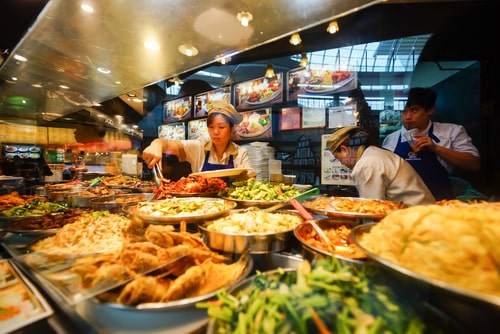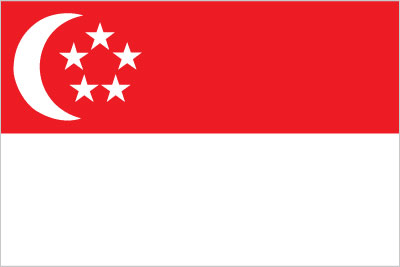Last updated on October 23rd, 2022
Facts about Singapore’s Economy
43. You don’t get rich in Singapore without thanking Singapore. Singapore prints the entire lyrics of its national anthem into its 1000 Singapore dollar notes.
44. Size doesn’t matter. The city-state which ranks at 190th in terms of size, ranks number one in terms of the salary it gives to its head of State. The Prime Minister of Singapore earns a whopping $2.2 million annually, which is five times higher than what the US president earns.
45. Singapore knows its business well. For ten consecutive years since 2006, it has topped the ease of doing business list by the World Bank.
46. Lee Kuan Yew was the first prime minister of Singapore who held the office for three decades. A deeply revered heartthrob of Singapore and an inspiration for the world, he turned Singapore into a first world country, in a single generation.
47. The millionaire concentration of Singapore is just too god-damn high. 17% of the population, or one in every six people, has assets worth $1 million or more, which is the highest in the world. A point to note down for conmen, across the globe.
48. Both the IMF and the World Bank have placed Singapore at the 3rd position in their GDP per capita list. Ironically, Malaysia from whom Singapore gained independence in 1965 is placed at the 28th on the list.
49. Singapore imports from one hand and exports from the other. Everything from sand to fresh water is imported and its entire economy is based on shipping.
50. Between 2014 and 2022, Singapore was the world’s most expensive city.
51. Singapore is an Asian Tiger. Nothing carnivorous, it’s just the name given to the economies of 4 Asian countries- Hong Kong, Singapore, South Korea and Taiwan, which saw tremendous growth during the late 20th century. Well, we knew the bull and the bear of economics, but the tiger is a cool addition.
52. The Changi Airport in Singapore was voted the World’s Best Airport for the fourth consecutive time in 2016.
Culture of Singapore
53. Singapore has invented food courts before it was cool. The hawker chefs of Singapore are notoriously famous for churning out world-class cuisines. They all converge on few spots which have become food hubs.

54. Singapore was long ago attacked by hordes of swordfish. A young boy worked out a brilliant plan to trap them but was killed by the king who feared his intelligence. Legend has it that the red color of the region’s soil is due to the young boy’s blood.
55. Singapore loves to enjoy good food. Every day two new restaurants are opened in Singapore. A rare feat, given its size.
56. Just the name “Garden City” didn’t satisfy Singapore’s high ambitions. The government plans to transform Singapore into a “City in a Garden”.
57. The cosmopolitan nature of Singapore can be understood by the name of its national flower; Vanda Miss Joaquim, an orchid named after an Armenian horticulturalists.
58. If you want to give a speech in Singapore learn the countries OB markers first. Singapore decides what topics are “Out of Bounds” for public discussion and debate. Incidentally, direct criticism of the government is not allowed.
59. Singapore has its own definition of success. The five C’s of Singapore: Car, cash, credit card, condominium, and country club are the five king makers in the island state.
60. The Sultanate of Malacca was founded by a Hindu king from Sumatra, Parameshwara who later converted to Islam.
61. The largest tropical orchid garden in the world can be found in the Singapore Botanic Gardens.
62. The diversity of Singapore made Singlish, a colloquial Singaporean English, the de-facto language of the state.
About the flag of Singapore

1. Design and Symbolism
The flag of Singapore represents its ideals as a fledgling independent republic. It also uses regional colors and symbols to promote inclusion for its diverse population.
It has two equal horizontal bands. The upper portion has a white crescent moon and five stars on a red background. Meanwhile, the lower section is a pristine white field.
According to official documents, red symbolizes universal fellowship and equality. On the other hand, white signifies everlasting purity and virtue.
The crescent moon shows that Singapore is a young nation on the rise. Meanwhile, the five stars represent the national values of peace, progress, democracy, justice, and equality.
2. Adoption
Singapore adopted the design as its state flag on December 3, 1959. It retained the flag upon becoming a republic on August 9, 1965.
3. Technical Details
The flag dimensions follow a ratio of 2:3. Recommended sizes are 36″ x 54″, 48″ x 72″, and 72″ x 110″. The government specified the red shade as Pantone 032. The HEX value is EE2536.
The five stars serve as the corners of an invisible pentagon. Two pairs are at the same height, while the remaining star is at the top. The center of the crescent and the pentagon are along the same line.
4. History
The Straits Settlements
In 1819, Sir Stamford Raffles landed in Singapore to establish a trading site. He purchased land on behalf of the English East India Company. British control extended to Penang and Malacca, with the three territories combining into the Straits Settlements. Its flag was a Blue Ensign with a red diamond, an inverted white pall, and three gold crowns.
The Crown Colony
During the Second World War, the Japanese imperial army occupied Singapore. They called it Syonan Island. The Japanese national flag flew during public events. After the war, Singapore pulled out of the Straits Settlements and became an independent crown colony. Its flag was a Blue Ensign with a modified emblem: a white circle, an inverted red pall, and a single crown.
The Modern Flag
In 1959, Singapore achieved self-governance within the British Empire and celebrated with a new flag that continues to fly today. Deputy prime minister Toh Chin Chye wanted an all-red field, but the cabinet was wary of the association with communism. The original design only had three stars for democracy, justice, and equality. The committee added the crescent, an Islamic symbol, to appease the Malay-Muslim community. It also accommodated the request for five stars by the Chinese majority.
Secession and Retention
In 1962, Singaporeans voted for a merger with Sarawak, Malaya, and North Borneo to form Malaysia. The following year, Prime Minister Lee Kuan Yew hoisted the Malaysian flag. However, differences led to the secession of Singapore in 1965. The country re-established its 1959 national flag.
5. Flag Usage
Singapore has strict policies regarding flag usage, depiction, and display. For example, people cannot superimpose words or graphics on the design. In 2003, authorities barred an art exhibit because the Chinese characters for “double happiness” were on the national flag.
In 2010, the Singaporean men’s water polo team wore flag-themed swimming trunks for the Asian Games. Critics deemed it inappropriate, but rules prevented changes in the uniform. The red-faced team could only change it after the competition.
Singapore – country at a glance
| Independence | 9 August 1965 (from Malaysian Federation) |
|---|---|
| Capital City | Singapore (city-state) |
| Largest City | Bedok |
| Area | total: 719 sq km land: 709.2 sq km water: 10 sq km (slightly more than 3.5 times the size of Washington, D.C.) |
| Population | 6,028,459 (2024 est.) |
| Official Language | English, Malay, Mandarin and Tamil |
| Borders | Malaysia |
| Currency | Singapore dollar (SGD) |
| Religion | Buddhism, Islam, Hinduism and Christianity |
| Life expectancy at birth | 86.7 years (2024 est.) Life expectancy at birth indicates the number of years a newborn infant would live if prevailing patterns of mortality at the time of its birth were to stay the same throughout its life. |
| Climate | tropical; hot, humid, rainy; two distinct monsoon seasons - northeastern monsoon (December to March) and southwestern monsoon (June to September); inter-monsoon - frequent afternoon and early evening thunderstorms |
| Terrain | lowlying, gently undulating central plateau |
| Coastline | 193 km |
| Lowest point | Singapore Strait 0 m |
| Highest point | Bukit Timah 166 m |
| Natural resources | fish, deepwater ports |
| Agricultural land | 1% |
| Literacy rate | 97.5% (2019 est.) |
| Demonym | Singaporean |
| Suffrage | 21 years of age; universal and compulsory |
| Government type | parliamentary republic |
| President | Tharman Shanmugaratnam |
| Prime Minister | Lawrence Wong |
| National anthem | "Majulah Singapura" (Onward Singapore) |
| National symbols | lion, merlion (mythical half lion-half fish creature), orchid |
| National colors | red, white |
| National holiday | National Day, 9 August (1965) |
| Birth rate | 8.8 births/1,000 population (2024 est.) |
| Death rate | 4.3 deaths/1,000 population (2024 est.) |
| Sex ratio | 1 male(s)/female (2024 est.) |
| Industries | electronics, chemicals, financial services, oil drilling equipment, petroleum refining, rubber processing and rubber products, processed food and beverages, ship repair, offshore platform construction, life sciences, entrepot trade |
| Exports | $978.597 billion (2024 est.) machinery and equipment (including electronics and telecommunications), pharmaceuticals and other chemicals, refined petroleum products, foodstuffs and beverages |
| Imports | $786.02 billion (2024 est.) machinery and equipment, mineral fuels, chemicals, foodstuffs, consumer goods |
| GDP - per capita (PPP) | $132,600 (2024 est.) |
| Time zone | SST (UTC+8) |
| Drives on the | left |
| Calling code | +65 |
| Internet country code | .sg |
| Table last updated | October 01, 2025 |
